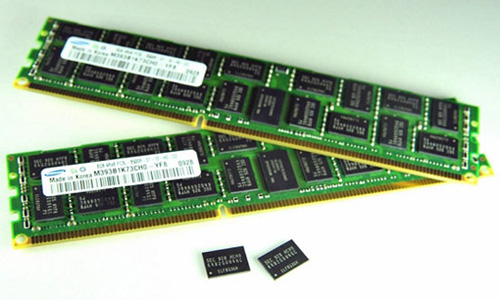 Samsung Electronics Co., Ltd., the world leader in advanced memory technology, announced today that it has begun mass producing the industry’s first two gigabit (Gb) DDR3 devices using 40 nanometer (nm) class process technology.
Samsung Electronics Co., Ltd., the world leader in advanced memory technology, announced today that it has begun mass producing the industry’s first two gigabit (Gb) DDR3 devices using 40 nanometer (nm) class process technology.
“We see market adoption to DDR3 picking up steam and are accommodating that with early entry of 2Gb DDR3 using the most efficient DRAM manufacturing technology available today,” said Jim Elliott, Vice President, Memory Marketing, Samsung Semiconductor, Inc. “This will set the pace for a new standard in premium, eco-friendly DRAM solutions offering the most advanced, low power RDIMM for servers anywhere.”

Samsung’s seven-month window between new process technology development and mass production of the new DDR3 (Jan. to Jul. ‘09) will allow OEMs to optimize their next-generation systems more quickly.
In addition, moving to a 40nm production process will provide around a 60 percent increase in production productivity over use of a 50 nm process.
Besides 16GB, 8GB and 4GB RDIMMs for servers, Samsung will produce UDIMMs (unregistered in-line memory modules) for work stations and desktop PCs or SODIMMs (small outline dual in-line memory modules) for notebook PCs of up to 4GBs, using the new chip.
The monolithic 2Gb chips are energy-efficient solutions for high-density, high-performance memory applications. Each supports a data rate of up to 1.6 gigabits per second (Gbps) at 1.35 volts, up to twice as fast as an 800Mbps 1Gb-based dual-die package.
According to market research firm iSuppli, 2 Gb DDR3 is expected to account for 82 percent of the total DDR3 DRAM market in units sold by 2012, and become the mainstream DDR3 DRAM product by 2010.
Source: Samsung Electronics, NewsWire Korea